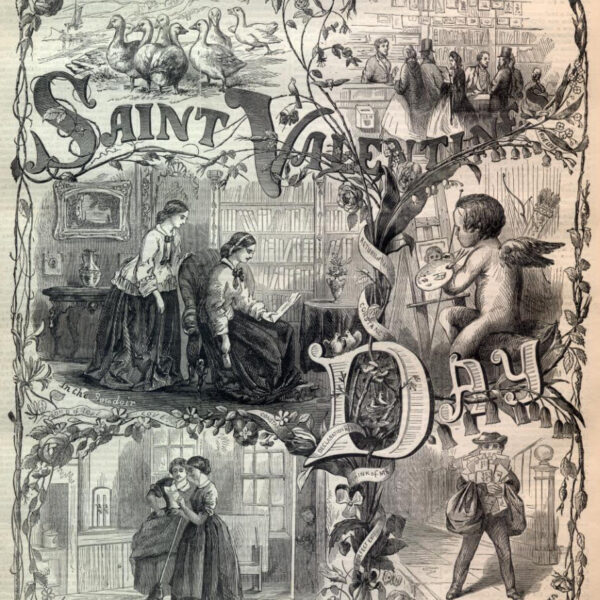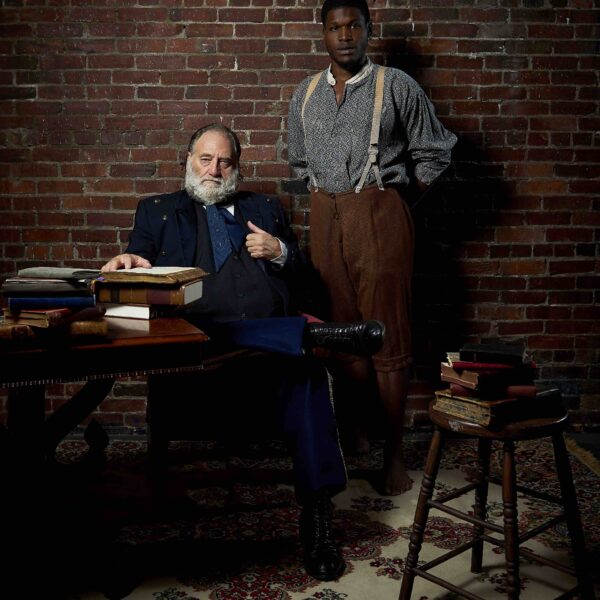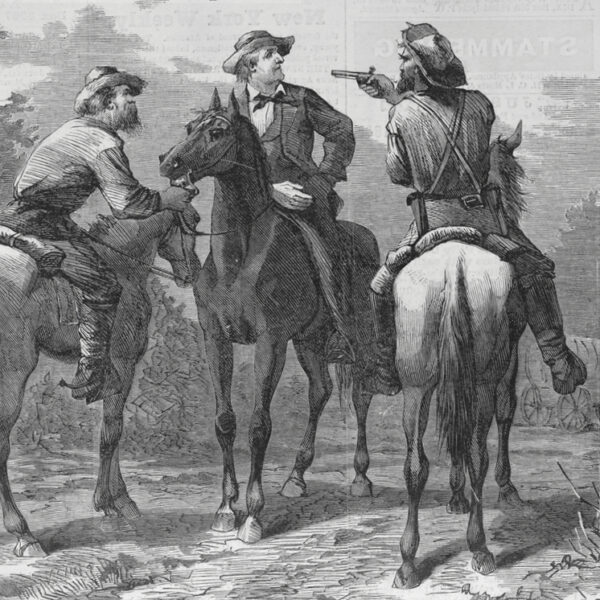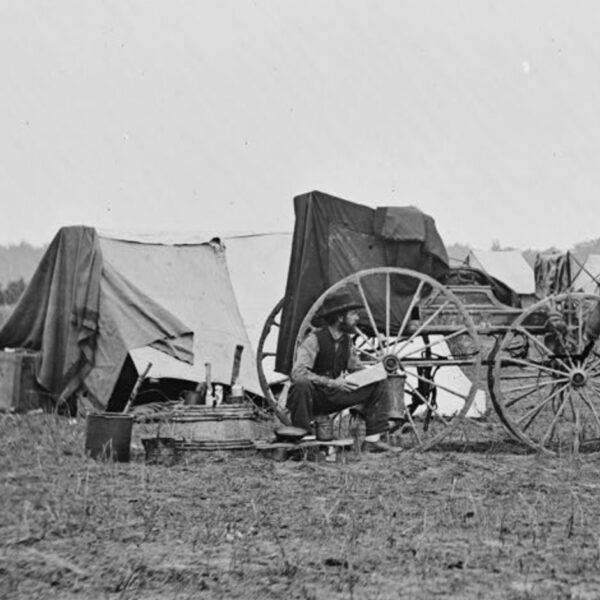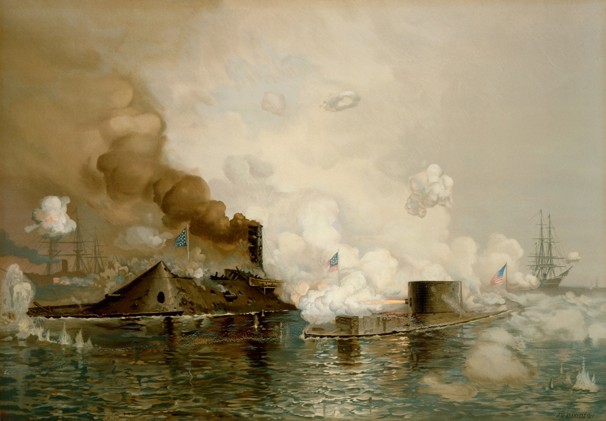
Last week, I packed up my husband and my dog and headed north to Norfolk and Newport News, Virginia. We were bound for the Civil War Navy Conference at the 10th Annual Battle of Hampton Roads Weekend sponsored by the Mariners’ Museum—auspiciously timed during the sesquicentennial of the famed clash of the ironclads. My purpose was to present some research that might one day appear in my doctoral dissertation and to start networking with fellow Civil War navy scholars. In all honestly, I had no intention of attending the conference—being subsumed with readings for comprehensive exams can do a lot to damper one’s drive—until a slight prod from my advisor changed my mind. The real clincher, though, was the fact that Craig Symonds was the keynote speaker; as a budding Civil War navy historian, I could not turn down the opportunity to meet the leading scholar in the field.
What had first promised to be a scholastic obligation became one of the best—and perhaps most motivational—weekends of my budding career. The weekend dawned a little too early for my night-owl tastes but my husband and I headed to the museum … and the conference. Upon arrival, I was struck by the historical import of the moment. (I think that the 1862/2012 parallel overwhelms many a Civil War scholar.) There was an encampment of Civil War re-enactors and the well-travelled The Civil War 150 HistoryMobile was parked out front. In the distance was the museum’s full-scale replica of the USS Monitor. After undergoing the requisite registration hassles, I began reconnecting with old friends and “meeting” new ones—it’s amazing how well you can “know” someone via the Internet without actually meeting them in person. I spent a lot of time with Craig Swain (whom you all know from his posts on The Front Line and his own blog To the Sound of Guns), Dave Colamaria (a former classmate who works for the Navy Historical Foundation and runs their all-things-navy blog), Charles Wexler (a fellow doctoral student from a rival SEC school; Wexler attends Auburn, and I attend the University of Georgia), and the wonderful crew from the Hampton Roads Naval Museum and the Civil War Navy Sesquicentennial blog: Matthew Eng, Laura Orr, Gordon Calhoun, Seaman Rob, and Sarah Adler. I also had the opportunity to catch up with the incomparable Dr. David Gerleman, a former professor of mine and the assistant editor of the Papers of Abraham Lincoln Project. And to complete the experience, I actually met Dr. Symonds; he graciously signed my copy of Decision at Sea and gave me some great career advice.
But enough about my adventures in Civil War Navy mania. Here are the top lessons I learned from the Civil War Navy Conference (in no particular order):
Everyone wants to be the next Edison. After perusing countless letters to President Abraham Lincoln, Dr. Gerleman identified 13 different ideas that American citizens offered to sink the CSS Virginia—or the Merrimack as it was often called. Not surprisingly, many wanted a substantial sum of money to complete the task as they were convinced that they alone could sink the ironclad and therefore end the war. Surprisingly, the many hair-brained ideas offered (including large nets, flying torpedoes, underwater cannons attached to the USS Monitor, grappling hooks, or the spraying of flammable liquid onto the Virginia) were deemed too “secretive” to commit to paper and therefore could only be revealed to Lincoln—or perhaps his secretary of war, should the president be too busy.
The federal blockade was not successful…but then it again it was. As Craig Symonds revealed, it is hard to judge the effectiveness of the naval blockade. According to statistics, Confederate vessels successfully ran the blockade 70 percent of the time. Also according to statistics, the Union captured or sunk about 70 percent of rebel blockade runners. So it’s a wash. In the end, the Union’s blockade of the Atlantic Coast did aid in its overall victory as it prevented the Confederates from importing and exporting sufficient goods to aid in their cause.
Drinking stories always keep an audience entertained. Both Sarah Adler (an undergraduate from American University who blogs for the Civil War Navy Sesquicentennial) and I talked about the role of libations in blue jacket culture; Adler covered the September 1862 Congressional ruling that permanently ended grog rations for the Union navy while I addressed the role of intoxication in Confederate notions of manhood. Needless to say, both presentations kept audiences entertained—after all, who doesn’t love a good drinking story?
It does not pay to loot Civil War shipwrecks. As Gordon Calhoun (historian and editor for the Hampton Roads Naval Museum) revealed, both the USS Cumberland and the CSS Florida shipwrecks—which conveniently lie side-by-side at the bottom of the James River near Newport News, VA—are under federal protection according to the Abandoned Shipwreck Act of 1987. In 1989, two aquatic entrepreneurs used clamming tongs to disturb the wrecks and retrieve artifacts. Their aim was to profit from the destruction and melt down artifacts to create contemporary style belt buckles for re-enactors. An FBI-sting resulted in felony convictions for the two looters. Most of the artifacts have since been returned to the Hampton Roads Naval Museum, which helps oversee the two shipwrecks.
Fundraising can result in gendered competition. Charles Wexler detailed how the Ladies Auxiliary Club of Charleston, SC, solicited funds to help build the CSS Chicora and the CSS Palmetto State. Not wanting to be outdone, the local men entertained thoughts of fundraising on behalf of the CSS Nemesis but never got beyond the planning stages. (I think the name of their proposed ship says it all.)
And, Civil War naval history is being taught…just not in the classroom. As Matthew Eng (Deputy Educator for the Hampton Roads Naval Museum and editor of the Civil War Navy Sesquicentennial blog) aptly reminded us, we live in a Web 2.0 world. There might be a dearth of scholarly works on the Union and Confederate navies, but that does not mean people are not talking about the conflict on the seas. The lands of Google, YouTube, Facebook, and Twitter, as well as the Blogosphere, are full of insightful commentaries on the naval war, and we would be remiss if we did not reach out to these captivated audiences and share our research.
That encapsulates most of my weekend. If you are interested in reading more about the Conference, check out the the Civil War Navy Sesquicentennial’s series of recaps: My Haley After Hours Event Kicks off BOHR Weekend, Battle of Hampton Roads Day 1 – Seaman Rob’s Report, Battle of Hampton Roads Day 2 – Seaman Rob’s Report, Let me count the ways (of sinking CSS Virginia), and Battle of Hampton Roads Weekend Recap.
Image Credit: Mariners’ Museum.
Related topics: naval warfare

